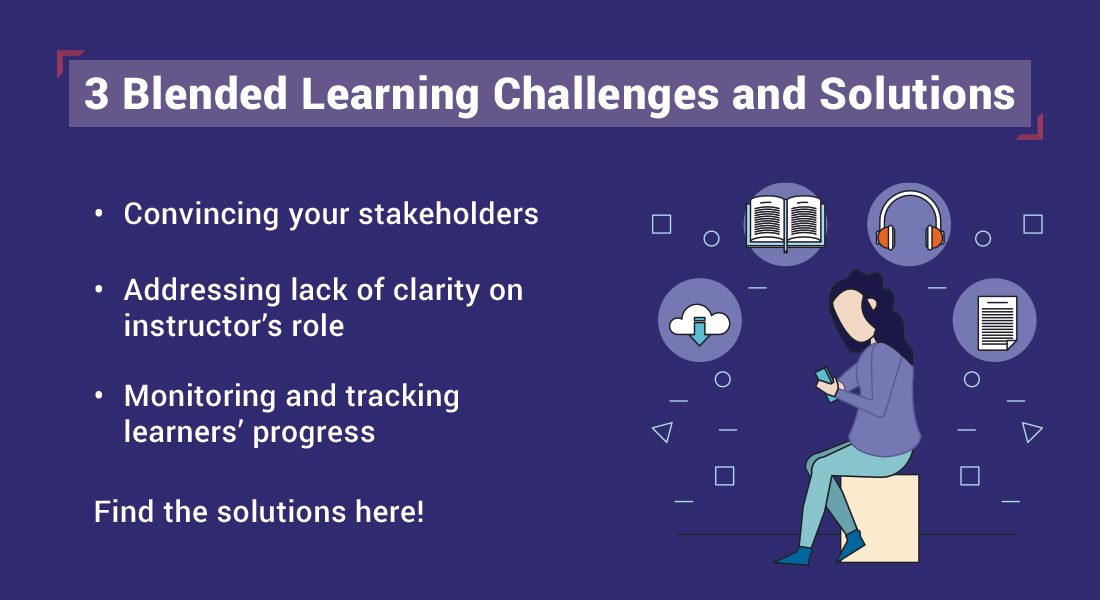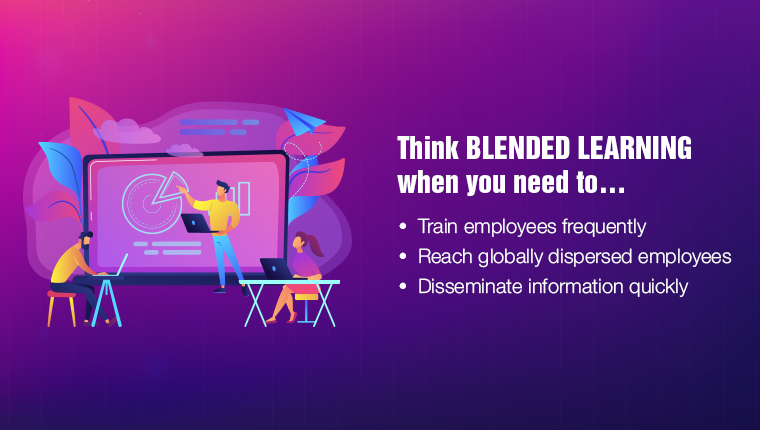5 Microlearning Assets to Add Value to Your Blended Learning Strategy
Check this blog to learn about microlearning assets that can add value to your blended learning strategy.

Microlearning is an integral part of a blended learning strategy simply because of the advantages it offers in terms of reducing the load on classroom training, promoting the better utilization of training time – both trainers and trainees, and improving the completion rates for training.
Microlearning modules have a big role to play in pre- and post-training activities. They are also an integral part of assessments and collaborative learning. With such benefits, microlearning can simply not be ignored in a blended learning strategy. Let’s now explore how microlearning formats can be used to effect in blended learning.
1. Videos
Short videos delivered as microlearning modules can explain processes and procedures. They can better explain the working of complex equipment or a safety procedure that cannot be demonstrated in the classroom. Video is a better alternative than asking your learners to read a four-page document in the classroom. This is because videos appeal to both visual and auditory learners. They meet the needs of multiple audiences with features such as closed captioning, descriptive audio, graphics and animation.
Microlearning modules can be accessed by learners whenever and wherever needed to absorb information. This way videos can be an extension of the learning covered in a classroom and will help understand better. Videos work well in sales training when you have to deliver product updates or demonstrate the working of a product to learners. They are useful in compliance and safety training because they can explain complex rules and regulations in a simple way. For software training, how-to videos can greatly help learners.
2. Infographics
This can be another valuable part of your microlearning arsenal in your blended learning strategy. They are a combination of visuals and text, that make complex ideas simple. They perform well as a ‘moment of need’ asset because they act as reference tools and offer a general overview of the topic. For instance, in compliance training, they can depict the most important points in company policies for quick reference by learners. Infographics can also act as a refresher for your learners.
3.Simulations
Simulations work well when you have to teach a process. They provide learners the opportunity to step into the ‘actual’ work environment and experience the challenges, without having to face the risks that are typically part of the process. They can afford to make mistakes without the fear of consequences. This helps build practical skills and test out different strategies. More importantly, simulations allow learners to make mistakes and learn from them. For instance, if an employee does not get the desired results from a simulation, he will be able to identify the skills needed to improve.
Micro modules as simulations can be helpful in pre-classroom training activities to help assess how much learners know, to decide the content for the classroom session. As for post-classroom activities, simulations can be used for assessments. It will be easy to assess how well they have understood based on how performance.
4.Podcasts
Podcasts or webcasts can be accessed by learners whenever they want to. They are ideal to provide additional information to your learners. They can be good reference tools when learners need to know more about a subject. As microlearning tools, they deliver content as small learning bites, because they contain small chunks of learning content that are easy to digest.
They can provide up-to-date information and can be made interesting when created by subject matter experts (SMEs) who can share tips, work related information or anecdotes. Learners can access them as part of the blended course.
5. Whiteboard Animations
Whiteboard animations present information in a short and crisp way. These illustrations on a white background can convey a story effectively. These brief animations are useful to introduce a concept or explain a process. Animations with audio make a better learning impact and appeal to both visual and auditory learners. They help learners put a visual context to the content and help absorb information better.
There are a number of options when you want to use microlearning as part of your blended learning strategy. Select these assets based on what you want your learners to know and the learning impact you want to create.





